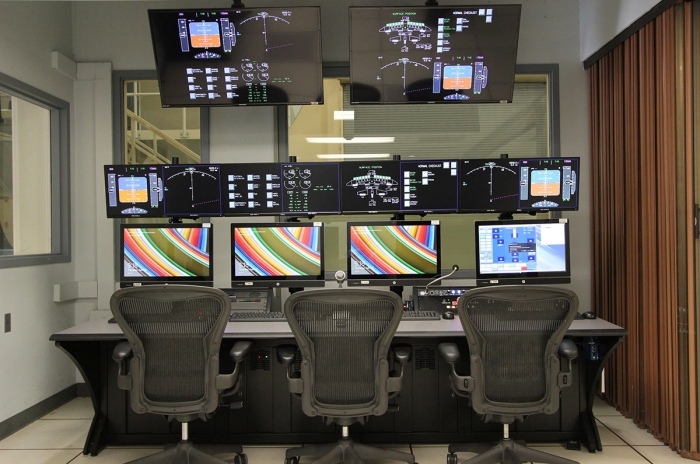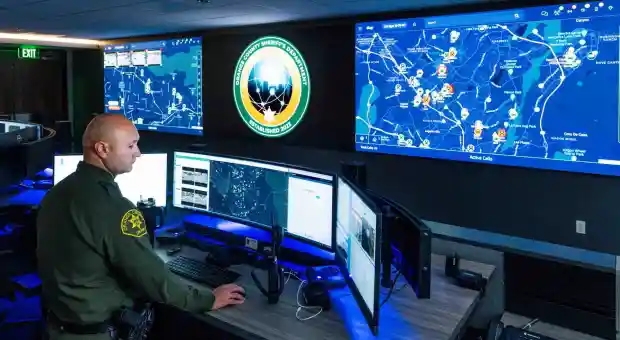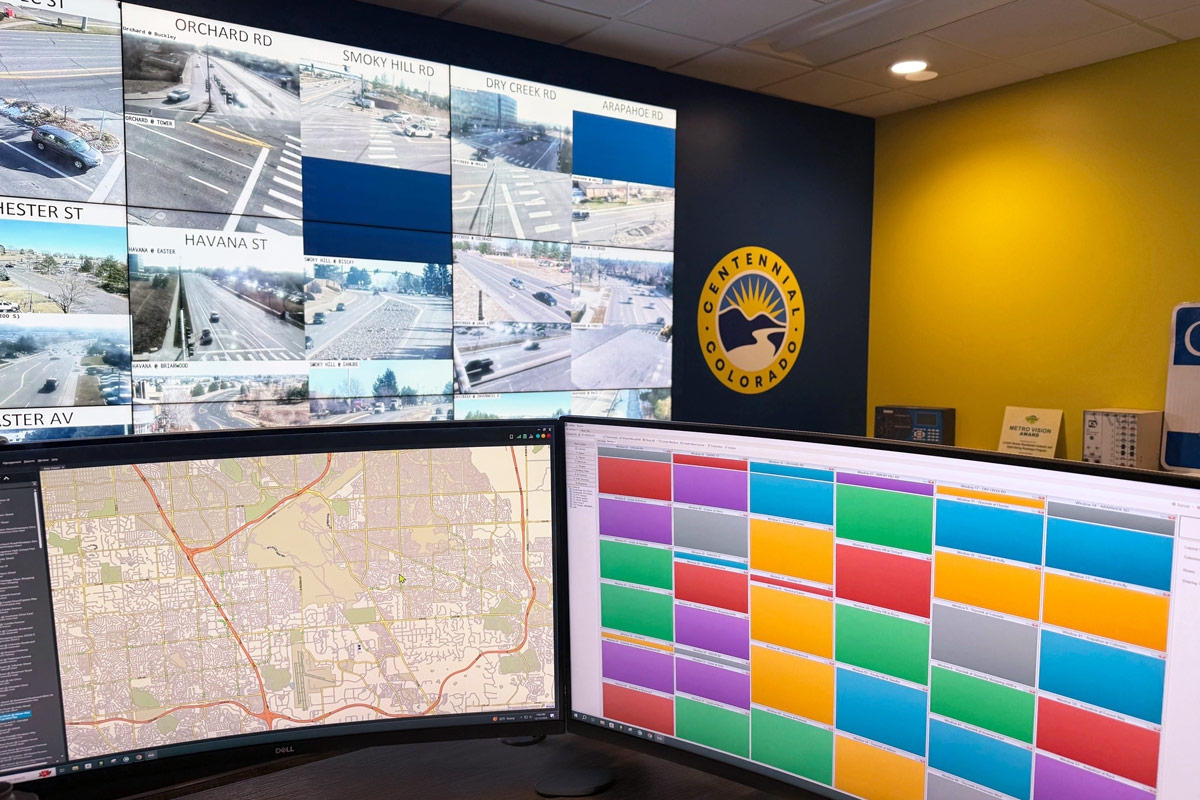Making Flights Safer at NASA Ames Research Center
For over 60 years, the NASA Ames Research Center in Moffett Field, CA, has been the site of cutting-edge avionic and aeronautical research and development. From concept to testing to final design, the facility supports a wide range of research related to aerospace vehicles, aerospace systems and operations, and aviation safety.
During a recent upgrade, NASA enhanced the display capabilities of their Advanced Concepts Flight Simulator (ACFS) with the addition of an RGB Spectrum matrix switcher and a number of multiviewers. The new equipment helps improve workflow and increase the efficiency of the AFCS system.
Commissioned in the mid-1980s, the AFCS is a highly customizable, reconfigurable aircraft simulator mounted on a six-degree-of-freedom synergistic motion system, which provides pilots with a highly realistic test flight experience. The AFCS is presently used to simulate two aircraft models: a generic narrow body transport vehicle (similar to a Boeing 757) and a C-17 transport.
The audiovisual system of the AFCS is built around RGB Spectrum’s 32x32 Linx matrix switcher, which routes input signals to various display devices. PC inputs to the system include unique flight profiles, avionics, target acquisition, weapons control and radar maps, as well as database inputs that depict specific airports and their surroundings under a variety of temporal and meteorological conditions. These pass through a distribution amplifier, which sends one set of signals to the simulator cockpit display, and the other to the Linx switcher for routing to multiviewers or directly to display devices.
Two separate console systems are used to control the flight simulation. The primary console consists of four single-monitor work stations where operators can view flight simulation data or video from cockpit cameras. Located directly above these workstation monitors are four repeater monitors, which display the glass cockpit avionics.
Two large 46” display devices mounted above these eight monitors provide the entire operator team and additional observers with a full view of the simulation imagery. The switcher routes imagery from the cockpit to two QuadView multiviewers, each of which configure up to four signals for display on the 46” monitors. Operators monitor the displayed information and can make changes to the flight simulation to test the pilot’s response to different variables.
A secondary control station, designed for supervisory use, features a 36” 4K monitor with a spectacular 8 megapixels of resolution. A SuperView 4K multiviewer enables the display of multiple HD images on this monitor without downscaling in a very compact architecture. The supervisor can view the same signals as the operators at the same level of precision and clarity but in a reduced size format. Alternatively, they can zoom in on particular areas of the display to analyze information in more detail or monitor pilot response.
RGB Spectrum is honored to have been a part of the cutting-edge aviation research conducted at the NASA Ames Research Center, as a long-standing supplier to this NASA facility over the past twenty years.
About RGB Spectrum
RGB Spectrum provides innovative solutions for the display, recording, and transmission of computer and video signals. Since its founding in 1987, RGB Spectrum has established itself as a leading designer and manufacturer of cutting-edge video/graphics processors and decision support systems. Company offerings include multiviewers, video wall processors, matrix switchers, codecs, recorders, and integrated solutions for control room management. RGB Spectrum's products are preferred by major global organizations in industrial, security, medical, educational, commercial and military markets. RGB Spectrum is a privately held company based in Alameda, California. For more information about our products, please call 510-814-7000 or contact us online.
RGB Spectrum is a leading designer and manufacturer of mission-critical, real-time audio-visual solutions for a civilian, government, and military client base. The company offers integrated hardware, software, and control systems to satisfy the most demanding requirements. Since 1987, RGB Spectrum has been dedicated to helping its customers achieve Better Decisions. Faster.™


